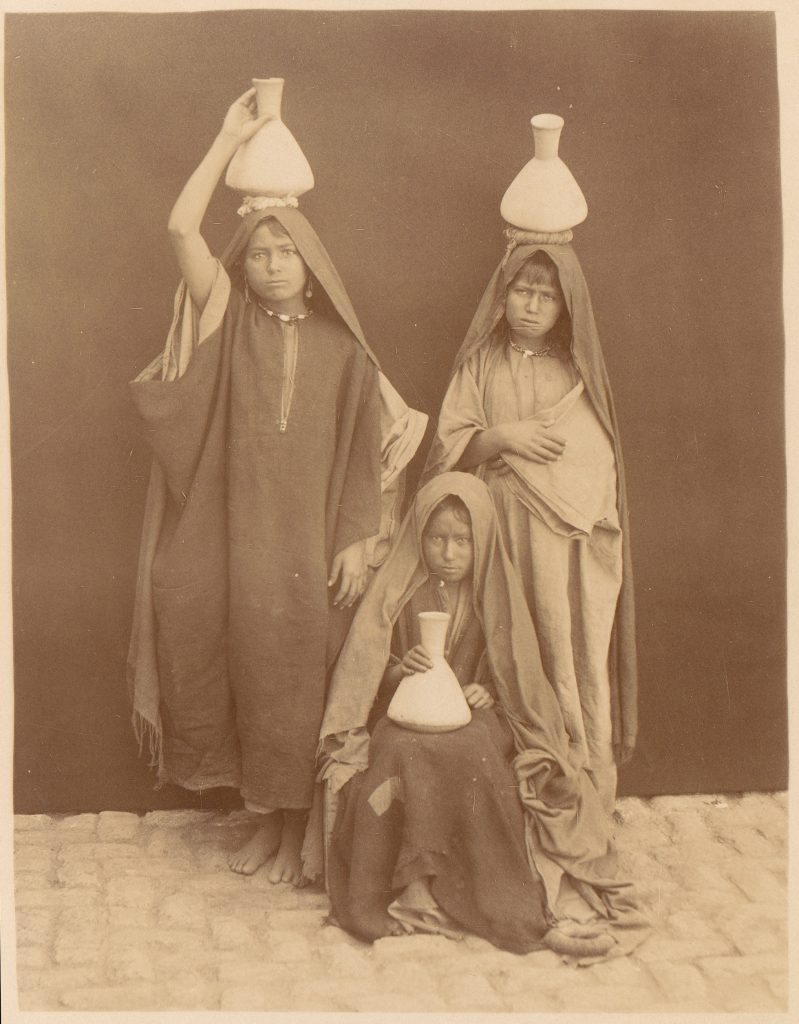
“Arab Girls Carrying Water,” by unknown artist, 1880s. Metropolitan Museum of Art.
Hidden away in the collections of the Metropolitan Museum of Art, there is this photograph of three young Arab girls carrying water jugs. Taken sometime in the 1880s, we don’t know who made it, where it was taken, or who these girls are.
Yet it says so much, both of these girls and their descendants.
Victorian era Westerners had a fascination with new cultures. As technology and transportation advanced, access to cultures like those of the Middle East was growing. It was easier to travel and explore the world, and photography ensured that you could document your travels and those you encountered along the way.
Like these girls. In the 1800s, their homeland of the Arabian peninsula was an isolated and peripheral domain of the Ottoman Empire. Western culture had not yet infiltrated their own rich and beautiful cultural legacy, but as explorers, travelers, and archaeologists increasingly came to the region, photography enabled them to document the “curious” and “unknown” cultures of the Middle East, Africa, and Asia. They were seeing these “backwards” cultures for the first time, and beginning a trend to modernize and Westernize these cultures through convents and schools.
A clue to how Victorians perceived these girls comes from the travel account of Villers Stuart, which details his 1879 encounter:
[…]two very pretty bright-eyed Arab girls carrying water-bottles on their heads for our benefit. The prettiest of them was called Ayeesha, but unluckily her water-bottle was old and broken and dirty, whereas her rival had a very smart new one. Poor little Ayeesha! She trotted after us over hill and down dale, and across the fiery Libyan hills. With her bright eyes and merry laugh, and chanting her little English phrases to us in the most musical of voices as she tripped along. On our next expedition she had bought a new jug, and made me drink out of it so often that I felt as if I was assuming its shape and rotundity.
Are these girls similar to Ayeesha? We may never know.
The only thing we do know is that their story persists. Today, around the world, carrying water is one of the primary tasks of young girls. According to the United Nations, World Health Organization, and UNICEF, women and girls spend 40 billion hours a year collecting water.
That’s the equivalent of an entire year’s worth of labor.
Because of the amount of time it takes to carry clean water to their homes, many girls are prevented from going to school and participating in the workforce. This perpetuates a cycle of poverty and inequality, stretching from these young girls to those living today. It’s hard to imagine that the problems of the Victorian era persist. That our cultural fascination with taking photographs and parading young girls of other cultures has persisted longer than our desire to help them overcome poverty and live their dreams. It’s a legacy of white culture that must be dealt with, if we ever hope to achieve true equality for girls.
-Tiffany Rhoades
Program Developer
Girl Museum, Inc.
This post is part of our 52 Objects in the History of Girlhood exhibition. Each week during 2017, we explore a historical object and its relation to girls’ history. Stay tuned to discover the incredible history of girls, and be sure to visit the complete exhibition to discover the integral role girls have played since the dawn of time.
